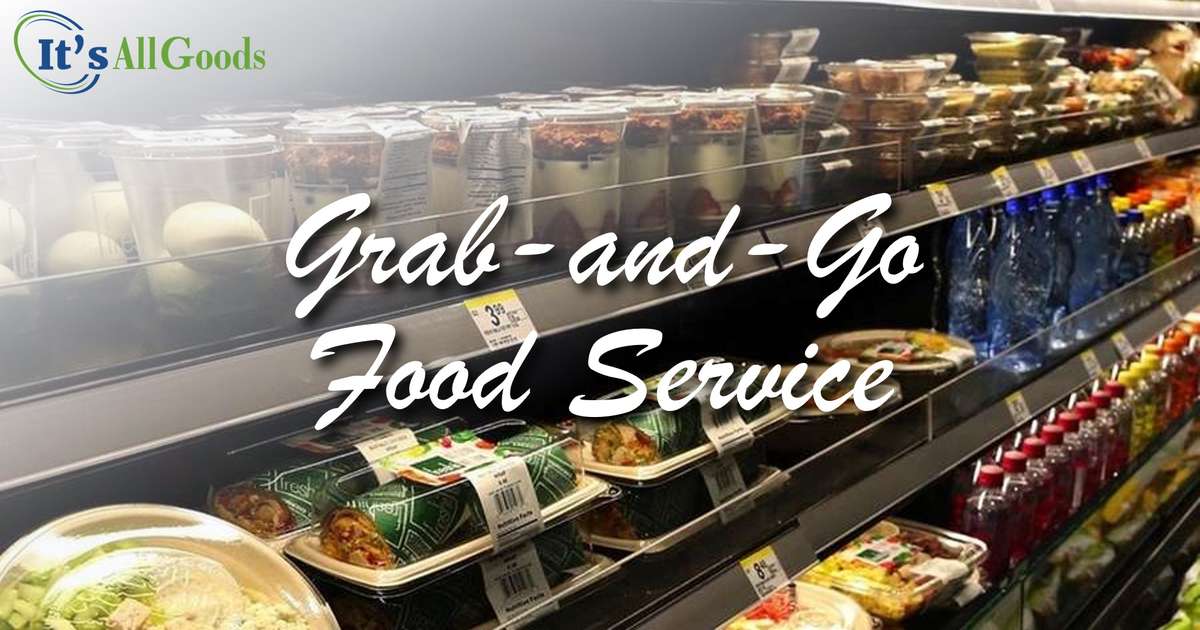

rab-and-Go foods are ready-to-eat meals and snacks that are sold as an alternative to traditional eating in cafés, bakeries, grocery shops, colleges, hotels, and other businesses. They are often sold through self-service refrigerators and food warmers. Only recently have they gained so much popularity because previously they were thought of as 'second-rate food’.
Grab-and-Go food services are very popular among the younger generation, particularly millennials. A 2014 consumer trends study found out that whereas 19% of average consumers select grab-and-go food items, nearly 30% of millennials purchase these items. The prevalence of Grab-and-Go food services in the market can be seen by the fact that there was an annual increase of 10.4% between 2006 and 2014 in Grab-and-Go foods, according to a Technomic study cited by an FMI about made-to-order food’s share in grocery stores.
According to Datassential – an organization dedicated to helping food & beverage companies of all sizes and segments innovate, sell, and plan for the future, backed by the best data in the industry – more than one in five consumers (22%) purchase Grab-and-Go foods from convenience stores numerous times per week, exceeding the 16% who do so at grocery stores.
Considering their increasing popularity in today’s world, Grab-and-Go hasn’t been without challenges during Covid-19. One common question common among all consumers – is Grab-and-Go safe considering the spread of the virus?
Incorporating safety measures first, convenience store personnel had to work on the safest packaging and display of these foods to minimize customer concerns pertaining to the safety and sanitization of the products. There was a shift to pre-made foods that are pre-packed for an additional element of safety.

The drastic shift that convenience stores had to go through because of the pandemic had a major impact on the sales and popularity of these food services. Convenience stores had to critically analyze the market trends, traffic patterns, and sales data to gain an understanding of where Grab-and-Go food services stood when viewed from a consumer's perspective. The constraint on customers physically coming in to purchase these products limited their sales as the convenience stores shifted to a newer version of operations. Also, due consideration had to be given to how these products need to be promoted under the circumstances.
However, during these tough times, emphasis was given to promoting Grab-and-Go services using technology. Ordering through websites and mobile phones became a thing and convenience stores weren’t slow to follow suit. These C-stores innovatively designed promotions and campaigns to improvise for the loss in sales.
"Grab-and-Go has always been strong for us and continues to be through the pandemic. This being said, we know we need to play in every arena to be successful long-term. Mobile ordering, curbside, MTO, etc., are all on our radar," said Paul Servais, the Foodservice Director of Kwik Trip – Wisconsin.
The demand for grab-and-go will be there because customers are always crunched for time. More and more operators are wanting to provide Grab-and-Go services, but they must do it well if they want to be successful
"Grab-and-Go has often been treated as a secondary offer to made-to-order options, whether it is in the positioning of grab-and-go warmers, packaging, maintaining the appearance of freshness," claimed Megan Sandlin, the Customer Planning & Development Manager at Tyson Foods. "As consumers have become more time-compressed in the mornings and between dayparts, grab-and-go is a good way to appeal to consumers looking for quick or a mini-meal."
As the dread and spread of the pandemic elevated, people had their problems with Grab-and-Go food services. They were wary of using these food services and convenience stores had to deal with this problem. Stores went into overdrive to provide their customers with safe and healthy food services. They had to suspend self-service stations and respect the customers’ wishes to limit their exposure to other people in the store. The use of shared equipment like spoons and tongs was also suspended. Due to this, the idea of pre-packaged foods took root and many consumers were comfortable with this option and it gained popularity.
While addressing these issues and the deteriorating conditions of the pandemic, certain measures were taken to cope with the problem, the suggestions of suppliers were solicited and taken into consideration. Sandlin called out to the suppliers and said "Suppliers can also help with recommendations on what offers make [the] most sense to be a Grab-and-Go offer."
Grab-and-Go food services were marketed through point-of-purchase and strategic positioning of the items. These items were placed near items that were grouped like coffee and other dispensed beverages. Employees were trained to monitor out-of-stock situations without having to be in close physical proximity. Warming carts were also strategically placed near checkout areas. This way, the items were much more visible to the customers and supported consumer impulse buying.
Convenience store distributor Core-Mark launched programs like turnkey grab-and-go foodservice solutions and QuickEats Heat & Eat displays. Both offer the safety and convenience of prepackaged items as well as the quality that consumers demand. They include nationally branded options for every daypart in beautiful display cases.
Convenience stores also had to provide an extremely clean and disinfected environment, ensuring the wellness of their employees and customers at the same time. Stores had to bear the extra costs for employee hazard pay, cleaning, protective gear as well as the loss in sales. “Passing along price increases is going to be very difficult,” said David Portalatin, a food analyst at The NPD Group.
However, Grab-and-Go has been pretty successful in recovering the losses it made during the pandemic as things normalize once again. “The demand for grab-and-go will be there because customers are always crunched for time,” says Marcia Schurer, president, and CEO of foodservice consultancy Culinary Connections, Chicago. “More and more operators are wanting to do grab-and-go, but they must do it well if they want to be successful.”